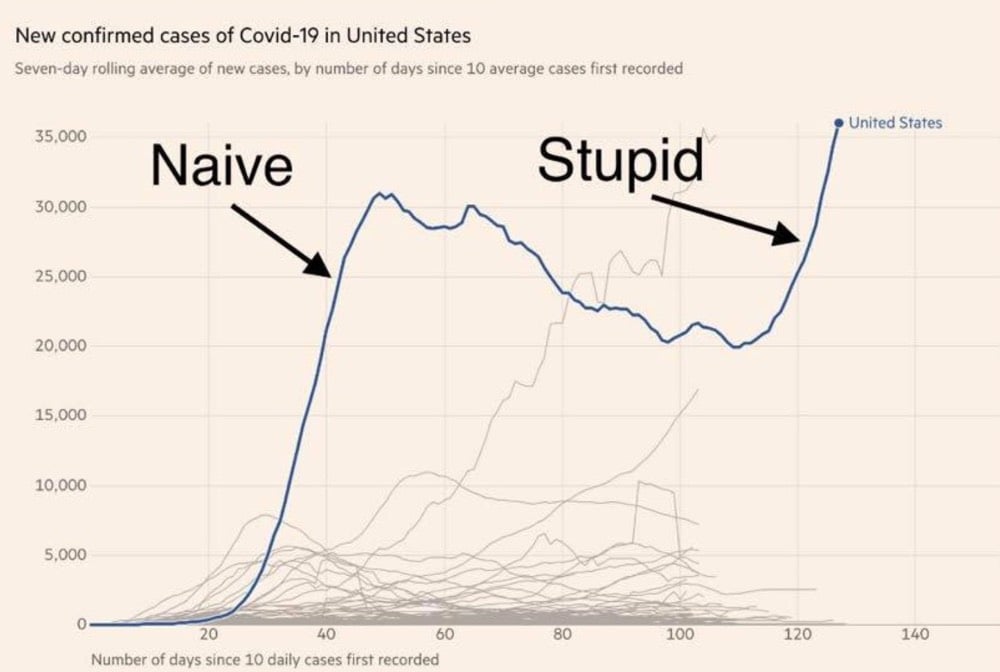Anthony Fauci: USA on Track for 100,000 Covid-19 Cases Per Day

The director of the National Institute of Allergy and Infectious Diseases, Anthony Fauci, told a Senate committee today that the US could be heading towards 100,000 new reported cases of Covid-19 per day. 100,000 cases per day. Yesterday the US recorded about 40,000 new cases.
“It is going to be very disturbing, I will guarantee you that,” he said.
“What was thought to be unimaginable turns out to be the reality we’re facing right now,” Fauci said, adding that “outbreaks happen, and you have to deal with them in a very aggressive, proactive way.”
Fewer than 20 countries have recorded more than 100,000 cases in total. Canada, for instance, has confirmed about 106,000 Covid-19 cases since the outbreak began.
Public health and infectious diseases experts, who have been gravely concerned about the way the U.S. response has unfolded, concurred with Fauci’s assessment.
Bars and restaurants are reopening around the country without any serious effort to test/trace/isolate/support. In the absence of strident guidance from the federal government, people are worrying less about social distancing and wearing masks to protect others. As this guy says, it’s just a matter of math:
“It’s unfortunately just a simple consequence of math plus a lack of action,” said Marm Kilpatrick, an infectious diseases dynamics researcher at the University of California, Santa Cruz. “On the one hand it comes across as ‘Oh my God, 100,000 cases per day!’ But then if you actually look at the current case counts and trends, how would you not get that?”
Absolutely nothing has changed about the virus, so its spread is determined by pretty simple exponential growth.
Limiting person-to-person exposure and decreasing the probability of exposures becoming infections can have a huge effect on the total number of people infected because the growth is exponential. If large numbers of people start doing things like limiting travel, cancelling large gatherings, social distancing, and washing their hands frequently, the total number of infections could fall by several orders of magnitude, making the exponential work for us, not against us. Small efforts have huge results.
We’ve known for months (and epidemiologists and infectious disease experts have known for their entire careers) what works and yet the federal government and many state governments have not listened and, in some cases, have actively suppressed use of such measures. So the pandemic will continue to escalate in the United States until proper measures are put in place by governments and people follow them. The virus will not change, the mathematics will not change, so we must.
Graph at the top of the post via Rishi Desai.





Stay Connected